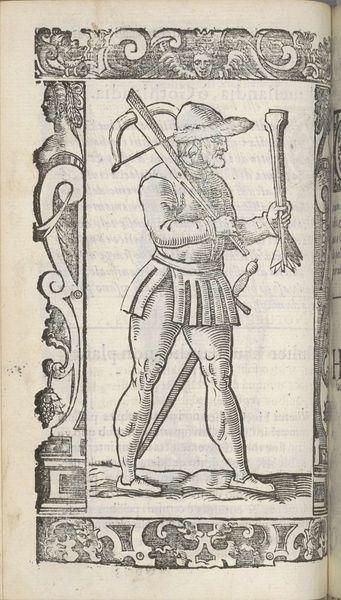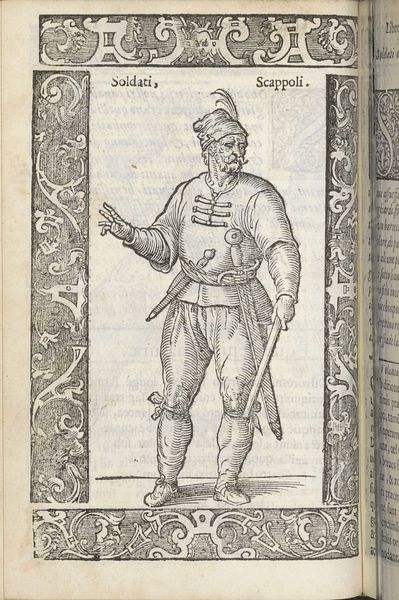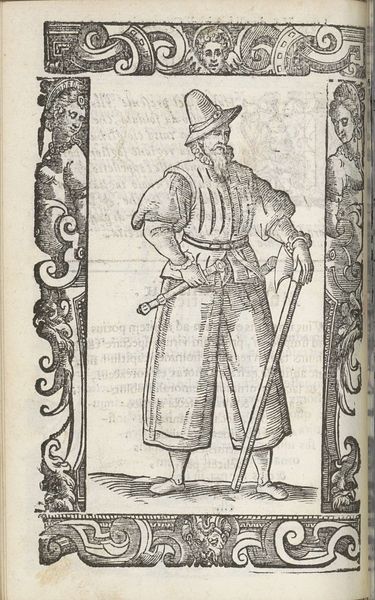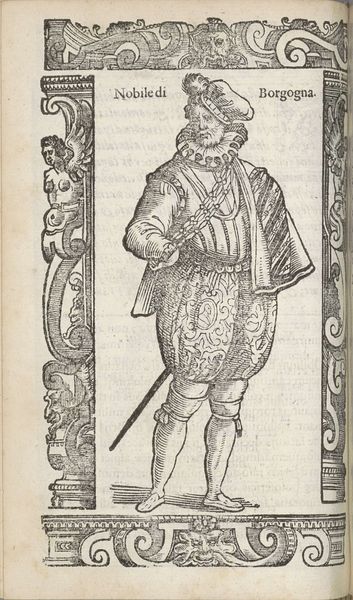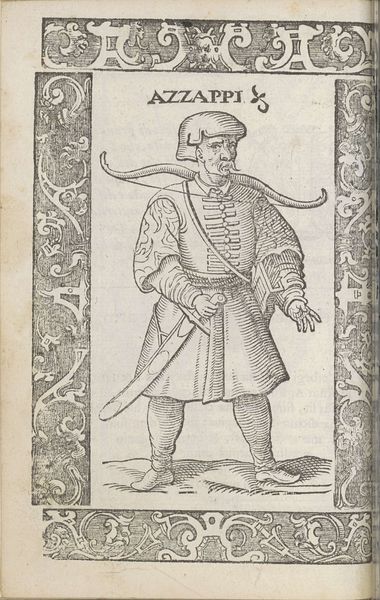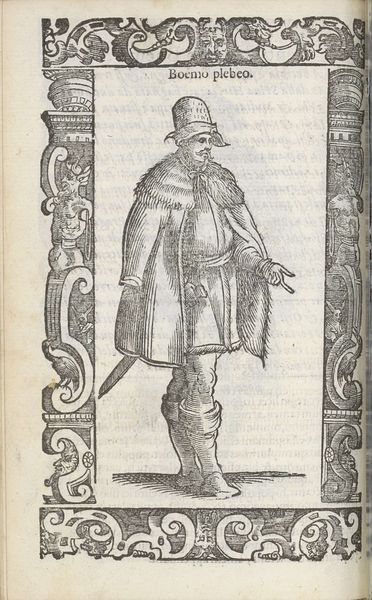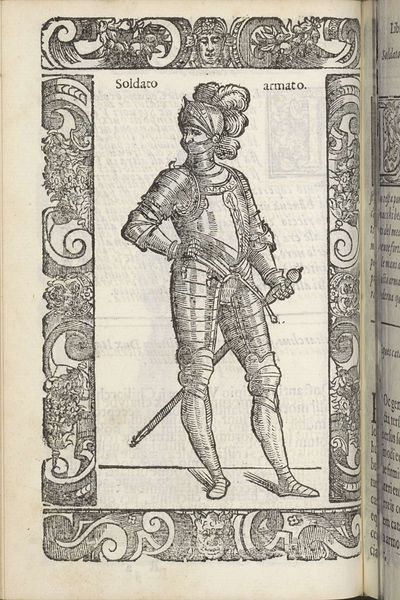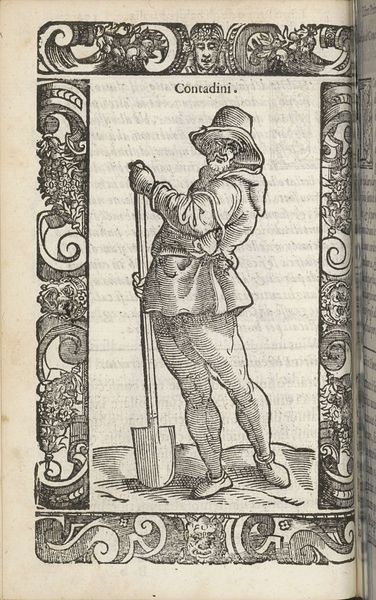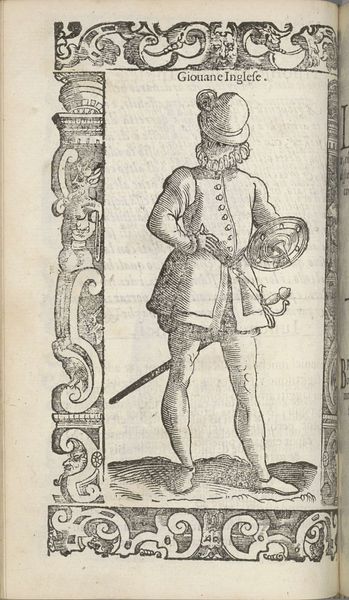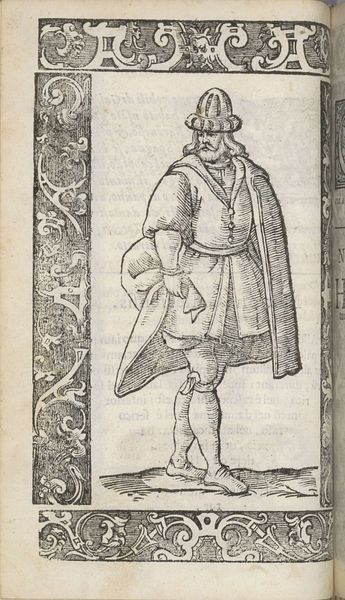
drawing, print, ink, woodcut, pen
#
drawing
#
toned paper
#
medieval
#
narrative-art
#
pen drawing
# print
#
pen sketch
#
old engraving style
#
sketch book
#
figuration
#
personal sketchbook
#
ink
#
pen-ink sketch
#
woodcut
#
pen work
#
sketchbook drawing
#
pen
#
northern-renaissance
#
sketchbook art
Dimensions: height 167 mm, width 125 mm
Copyright: Rijks Museum: Open Domain
Christoph Krieger created this woodcut illustration, titled "Huomini settentrionali in viaggio," or "Northern men traveling," likely in Germany during the late 16th or early 17th century. The image presents an armed male figure in profile, carrying a crossbow, quiver, and axe, set within an elaborate ornamental border. Here, we see the visual codes of the wandering mercenary. The image creates meaning through recognizable symbols of the traveling soldier, alluding to the political and economic realities of the period, when military service was a common trade, particularly for those in the lower social classes. The culture of Early Modern Europe saw the rise of the Landsknecht, or mercenary soldier, who often traveled across the continent in search of employment. Understanding this image means understanding the social conditions that gave rise to it. Historians study the visual culture of the past, using documents, prints, and other period sources to reveal the meaning of images like this one. Here, we can see how art reflects the institutions and social realities of its time.
Comments
No comments
Be the first to comment and join the conversation on the ultimate creative platform.
